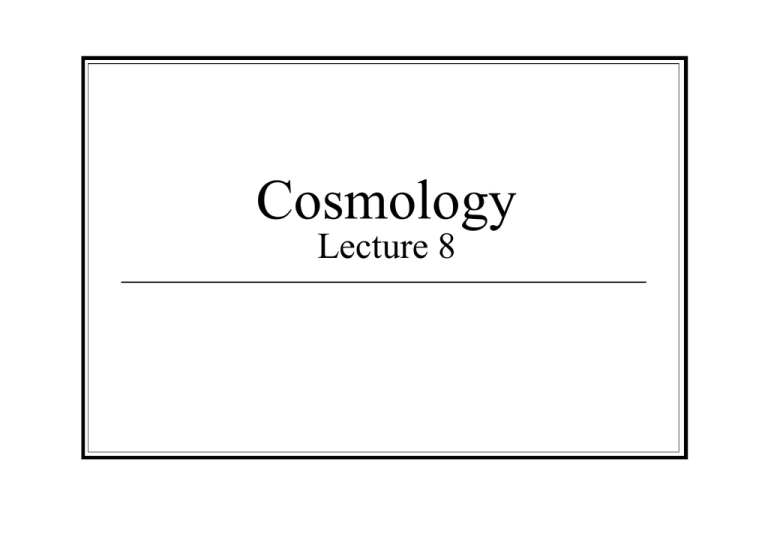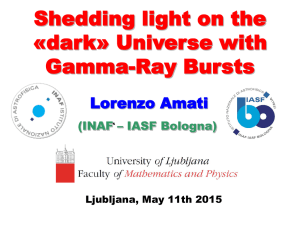Cosmology Lecture 8
advertisement

Cosmology Lecture 8 Flux K-corrections Wavelength Need to allow for redshift of spectrum Objects both fainter and brighter than implied by F α 1/d2 SN Ia at z>1 Looks good for the benchmark model Riess et al. 2007 ApJ 659 98 http://arxiv.org/abs/astro-ph/0611572 Is Λ constant Riess et al. 2007 ApJ 659 98 Limits for type Ia supernovae Hubble Space Telescope cannot see SN Ia beyond z>2 Need next generation of space telescopes / instruments Need more luminous standard candles Joint Dark Energy Mission (JDEM) Selected as next major NASA mission in August 2007 3 competing designs SNAP - Supernova Acceleration Probe Field of view 400 times larger than Hubble Space Telescope Destiny - Dark Energy Space Telescope Similar to SNAP Very wide field optical + IR 5 day cadence Spectroscopy (for redshifts) ADEPT - Advanced Dark Energy Physics Telescope Wide field, deep galaxy survey Imprint of anisotropy of CMB on universe at later times (baryon acoustic oscillations) Also, finds ~1000 SN Ia to z<1.7 Know co-moving size of perturbation: r = a(t) x Gamma-ray bursts (GRBs) Brightest explosions in universe Can be 1000+ times brighter than SN Ia GRB energies Gamma-ray spectrum corrected Beaming corrected GRBs appear highly non standard, but might be possible to standardize GRB cosmology Our benchmark universe (ΛCDM) H0 = 72 km s-1 Mpc-1 Ω0 = 1 - spatially ΩΛ = 0.73 Ωm = 0.27 Ωm,baryon = 0.04 Ωm,cold-dark-matter = 0.23 What is dark matter? Ωr = 10-4 Age of universe = 13.7 Gyr How does structure form? What is dark energy? Does model hold in very young universe? Theory is very successful at describing universe evolution over most of cosmic history Epochs of the universe





